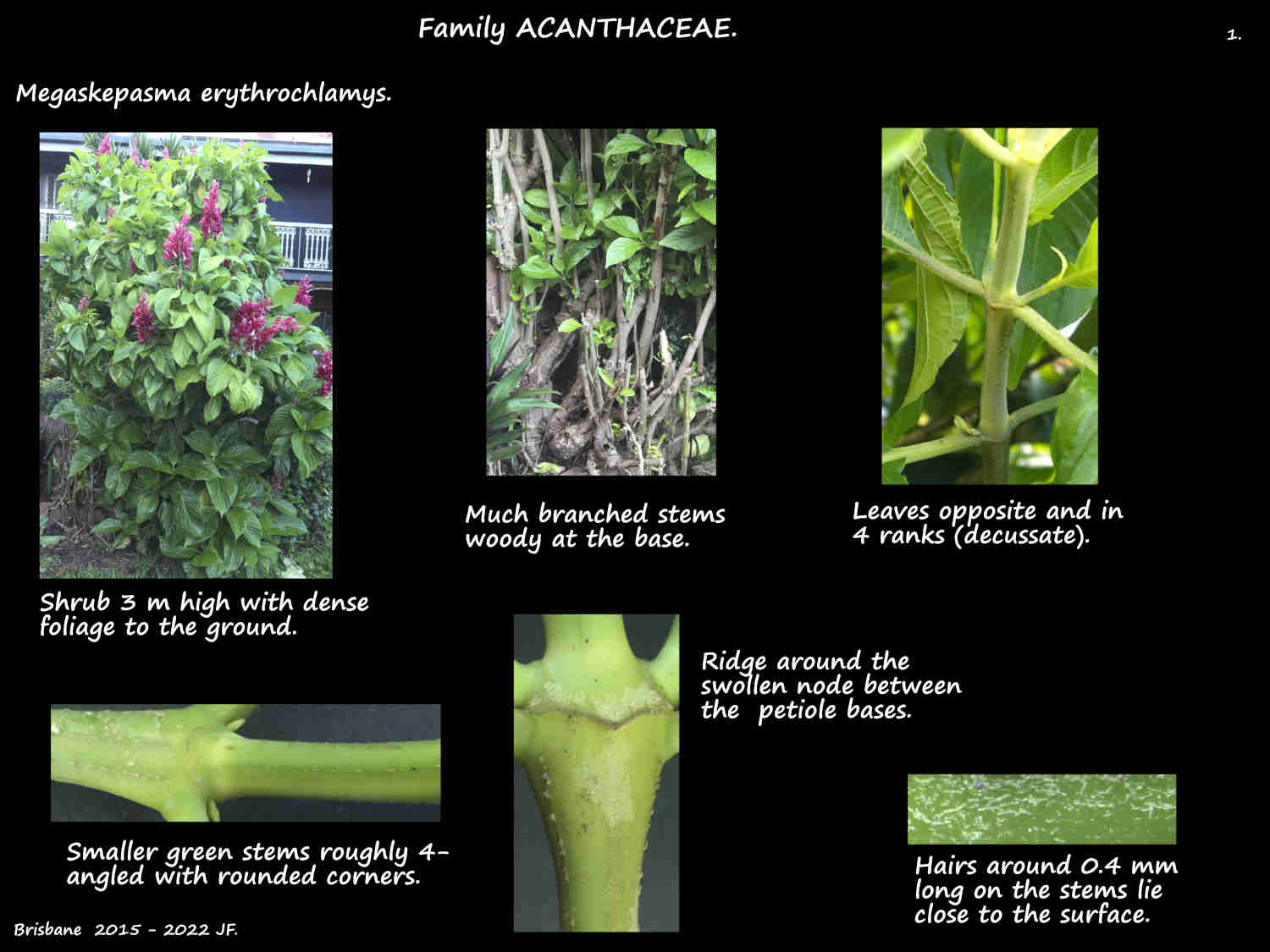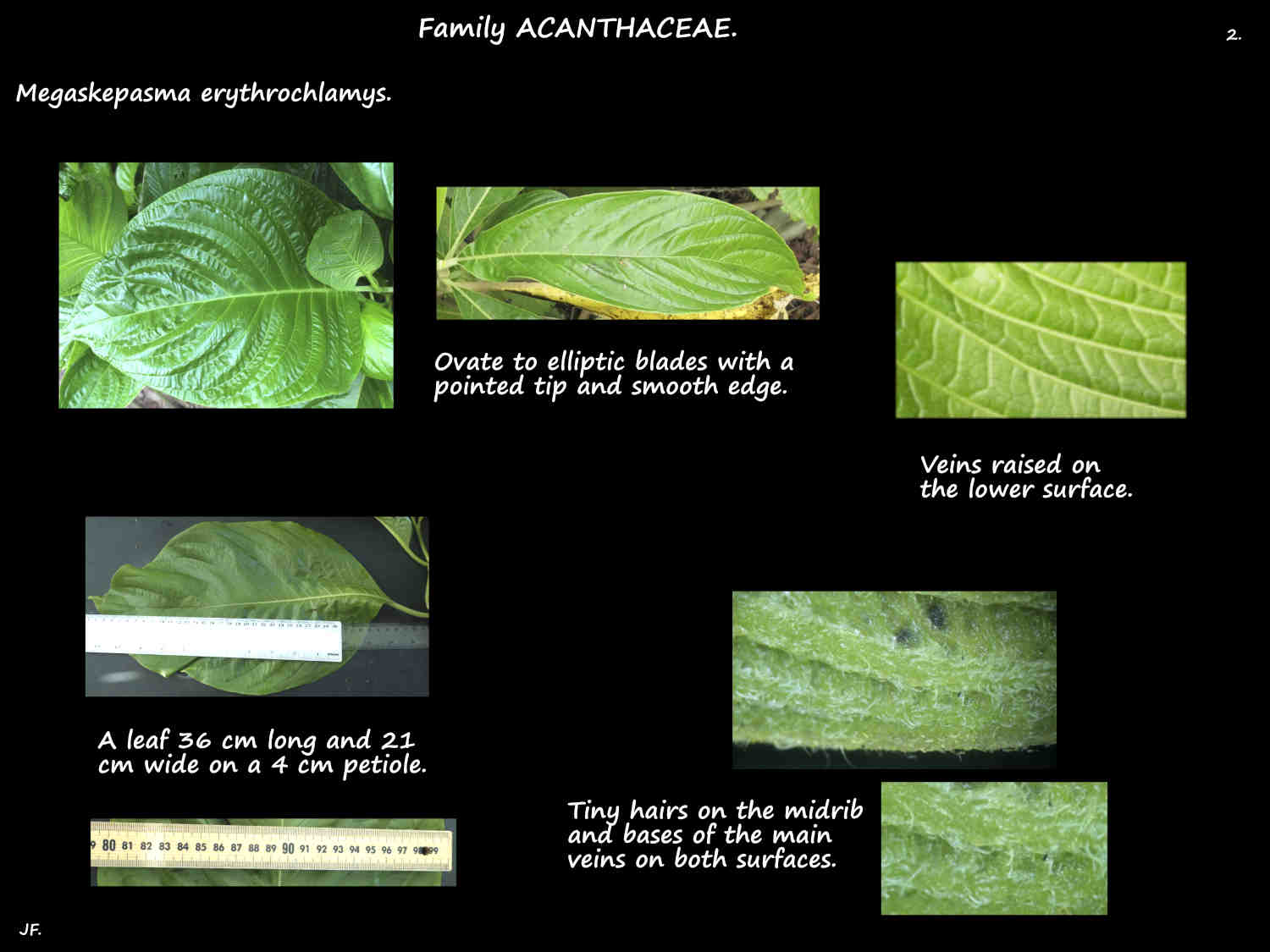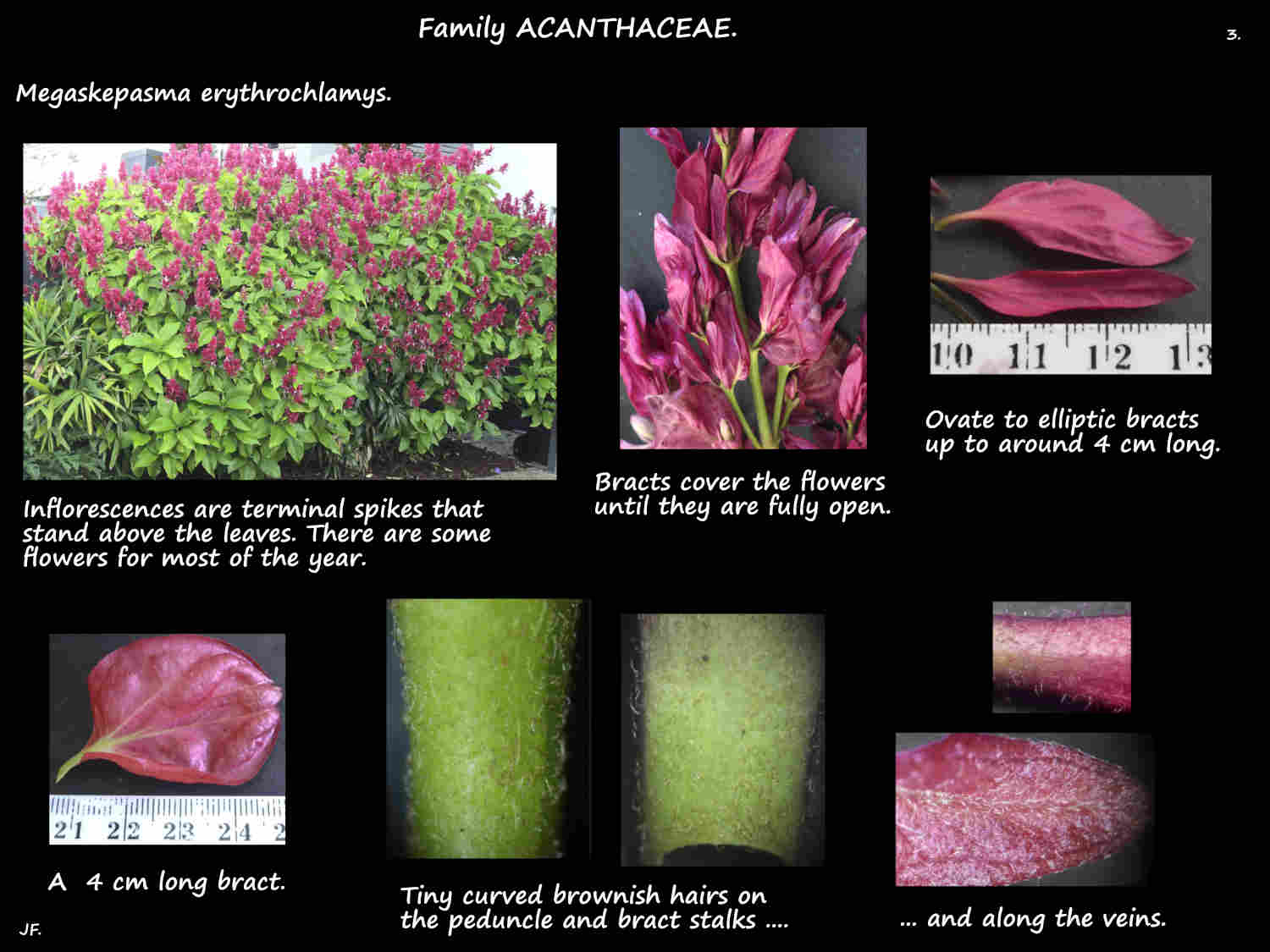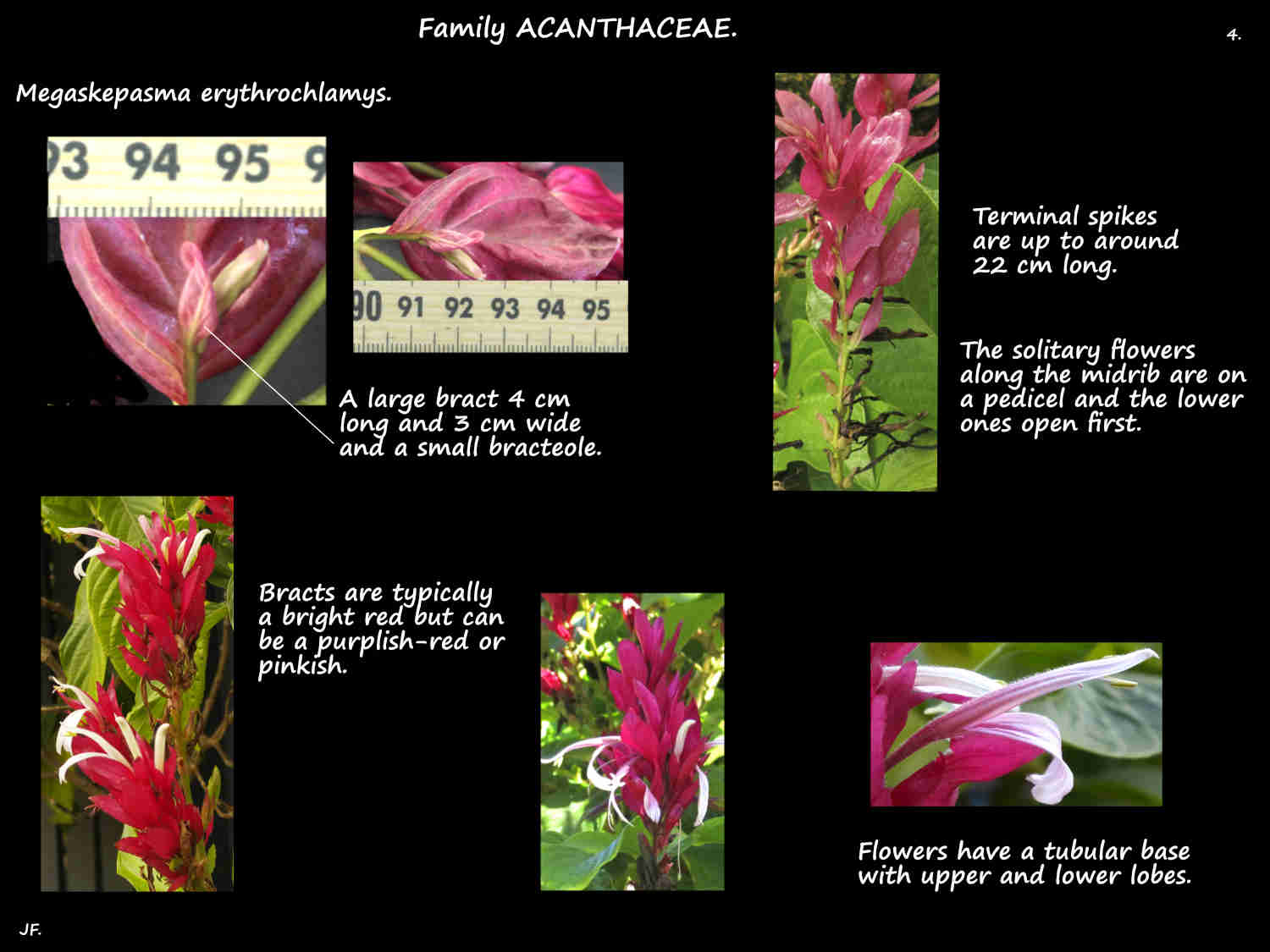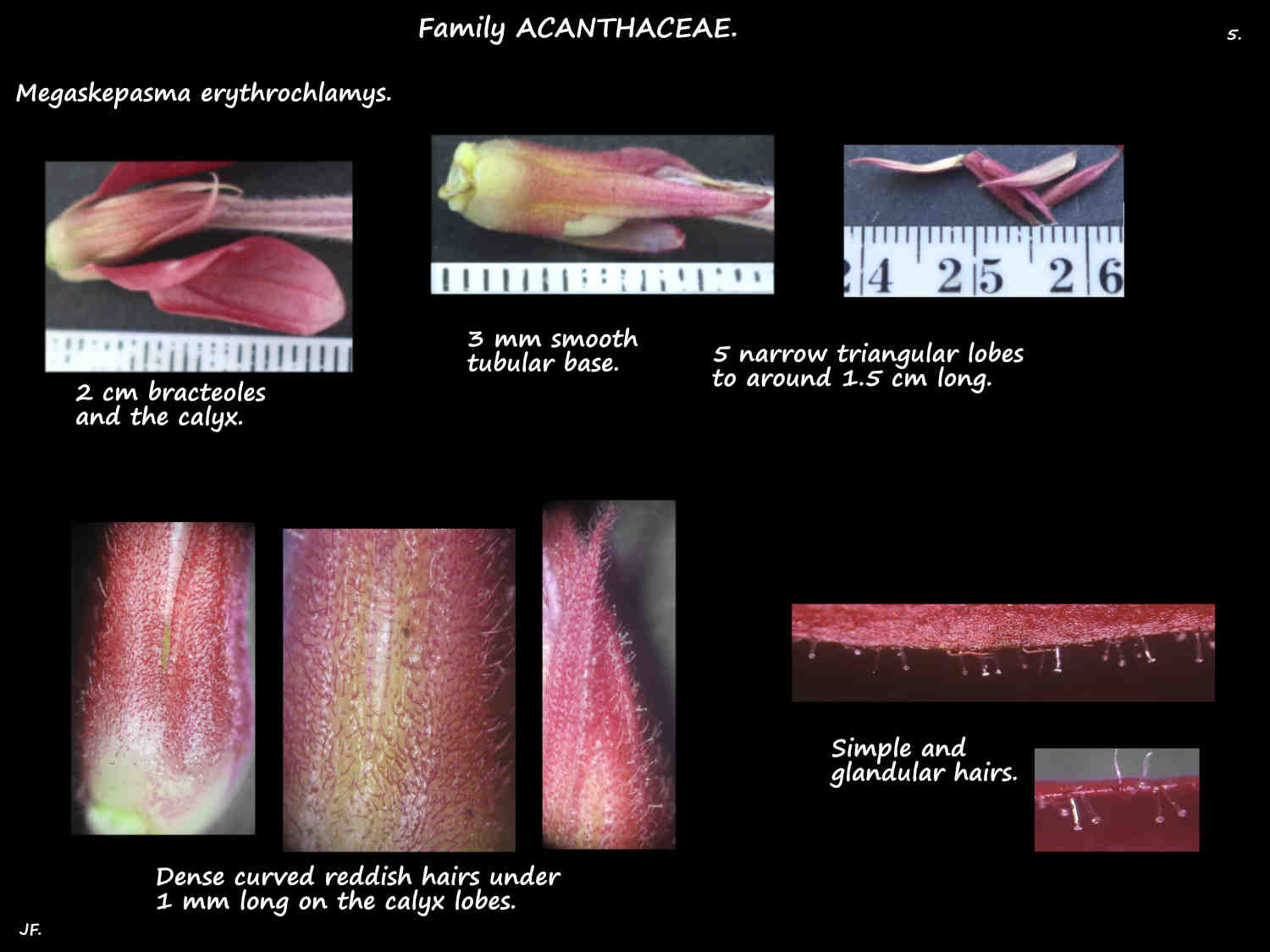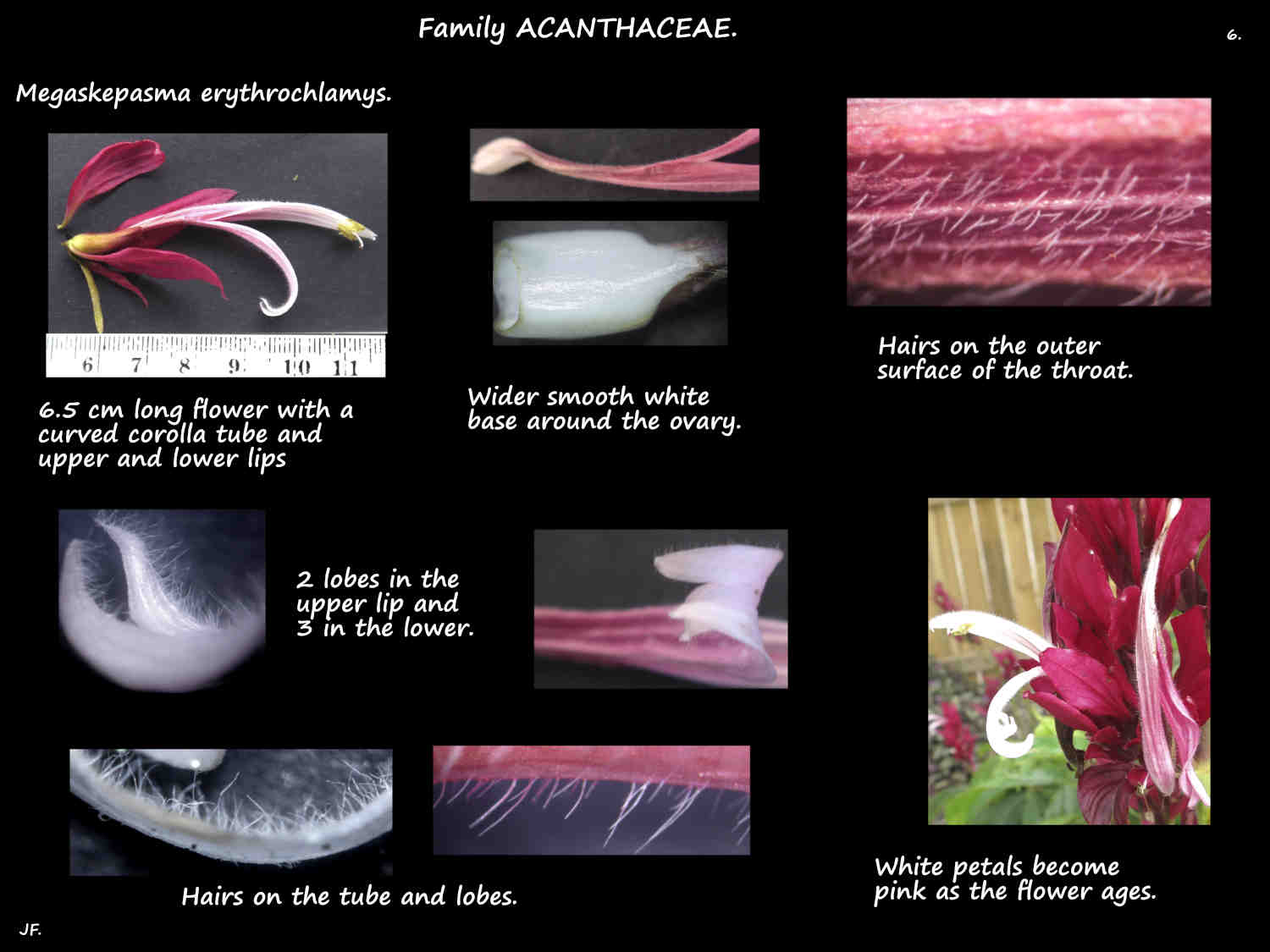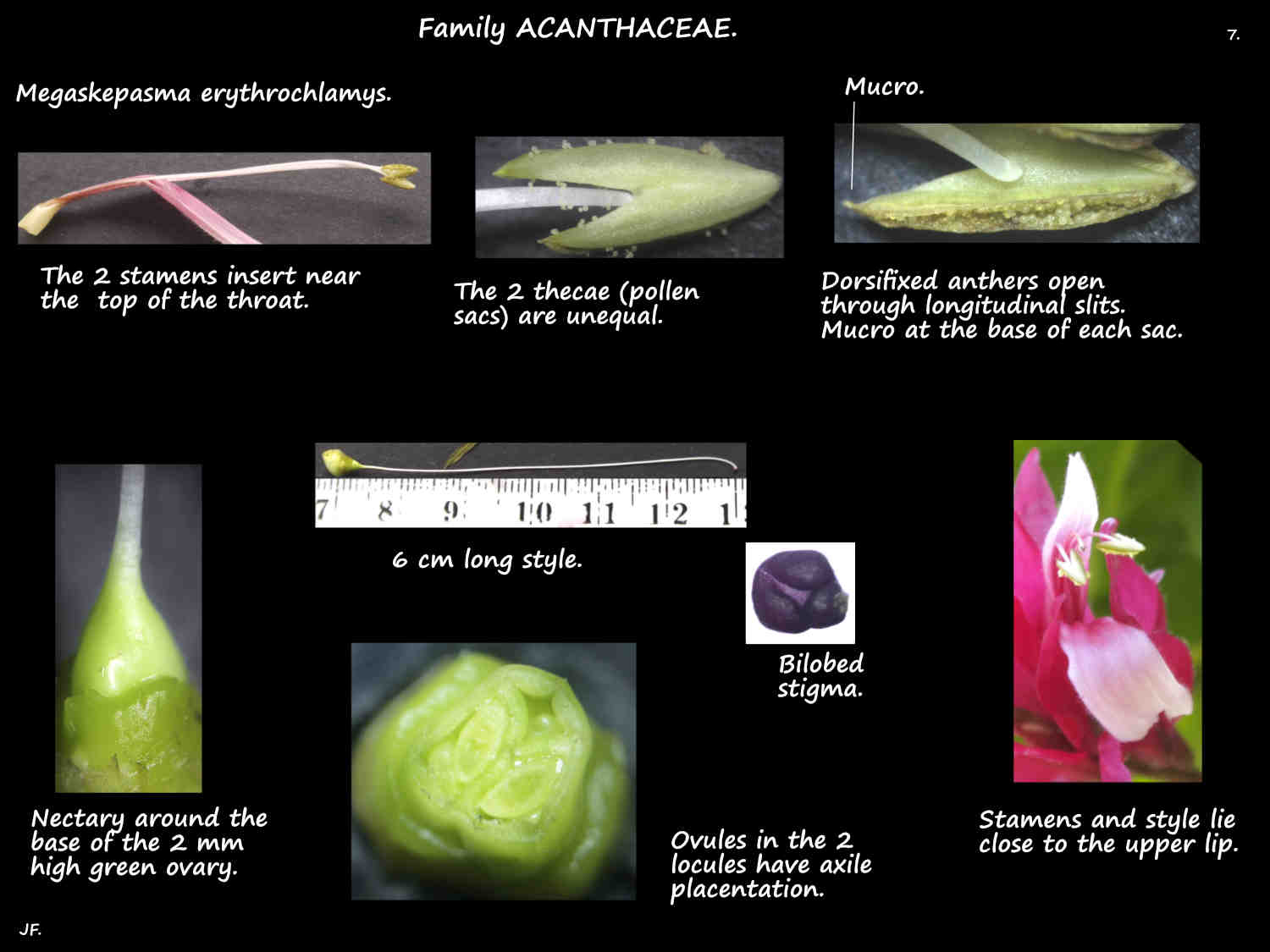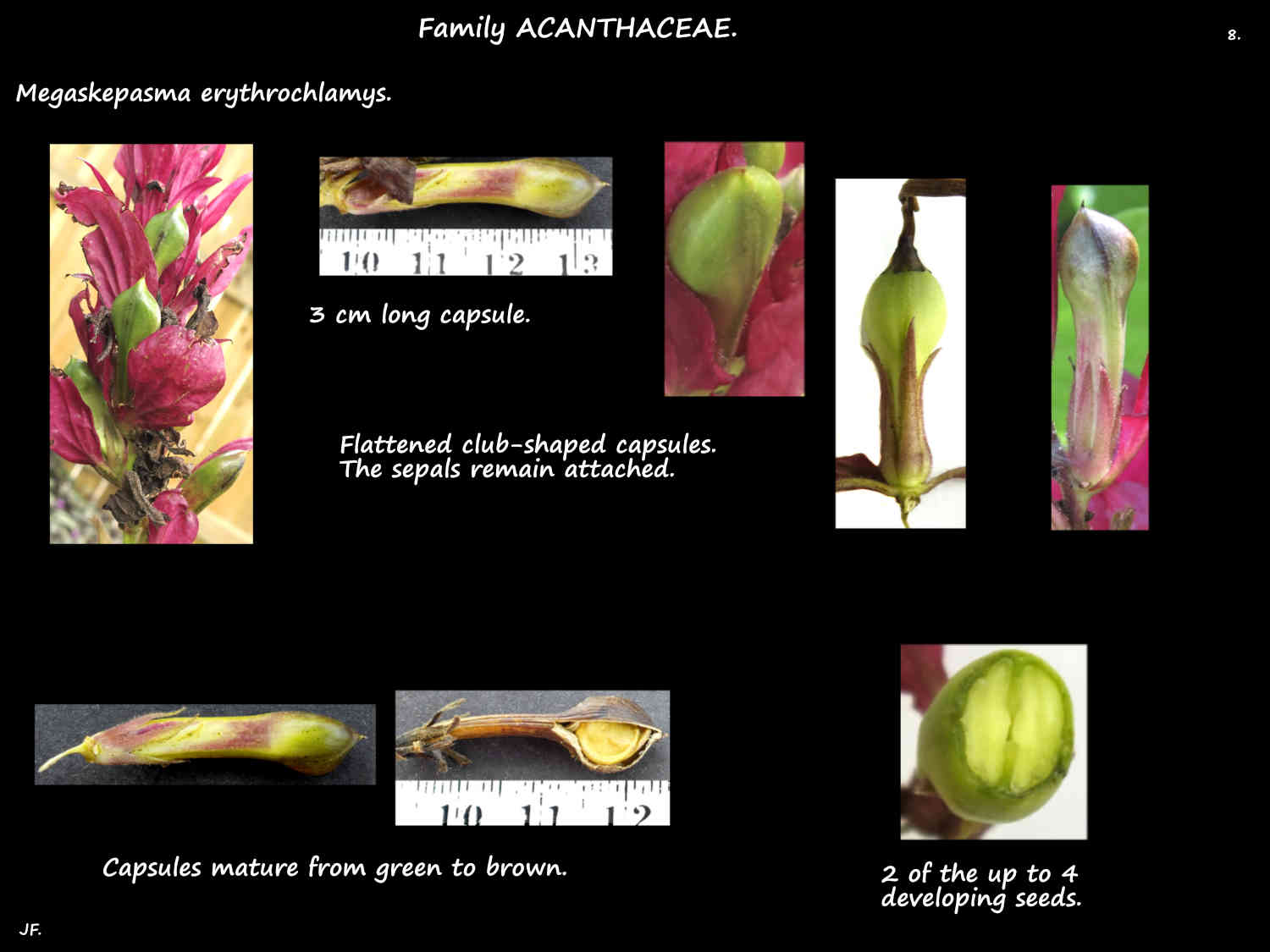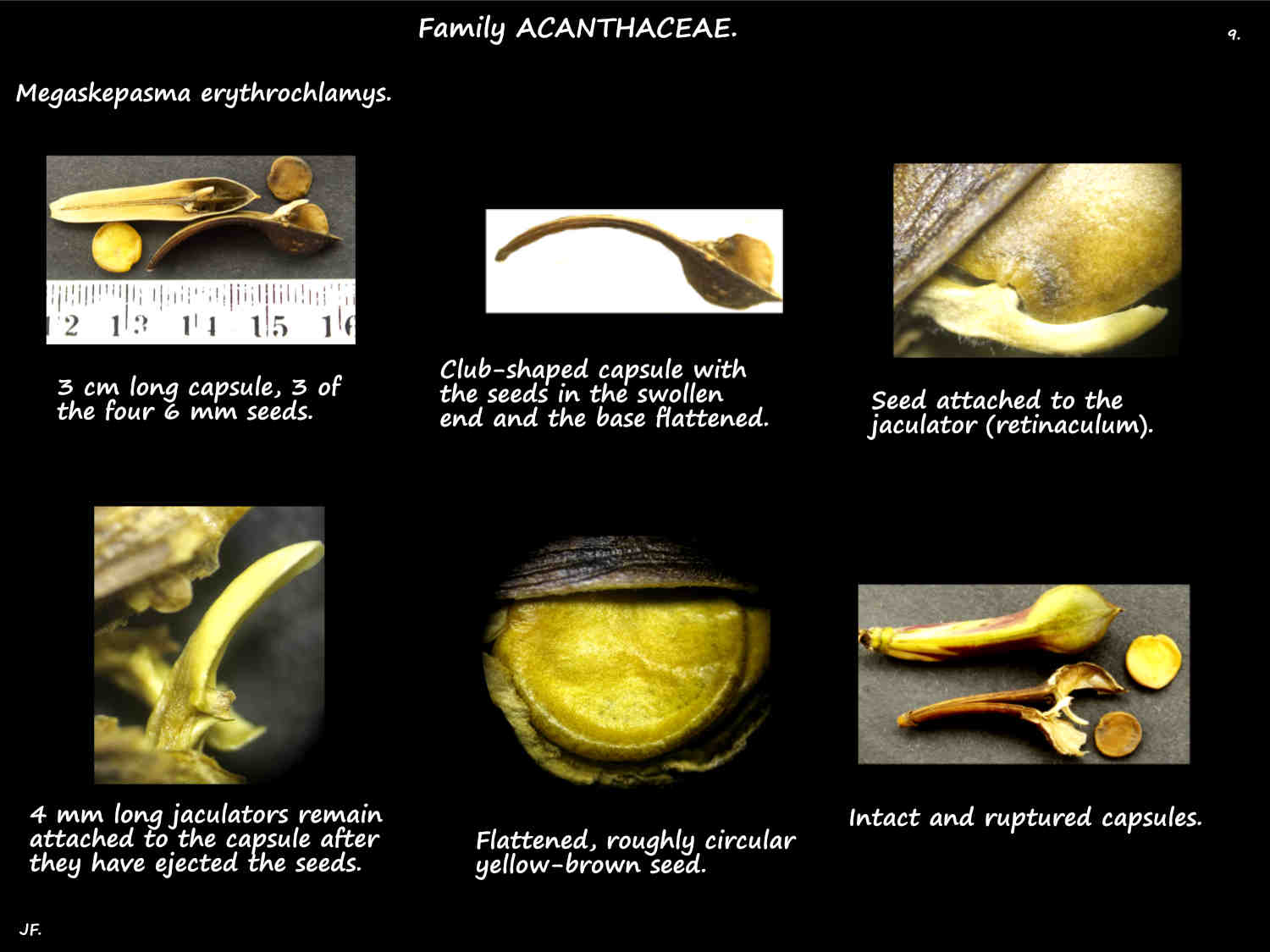Megaskepasma erythrochlamys.
Family Acanthaceae > Subfamily Acanthoideae > Tribe Justicieae.
With only 1 species in the genus descriptions of both are the same.
The widely cultivated Brazilian Red Cloak is native to Venezuela and Suriname.
An erect evergreen shrub around 2 to 3 m high.
In its native habitat it can be a small tree up to 5 m.
The many branched stems at the base are woody.
Higher stems are roughly 4-angled and swollen at the nodes.
There are reddish hairs that lie close to the surface.
The opposite leaves, on hairy petioles up to 2 cm long are in 4 ranks (decussate).
The ovate to elliptic blades are up to 40 or 50 cm long and 20 cm wide with the upper ones being smaller.
The tip is pointed and the edge smooth or with teeth or small lobes.
The base is wedge-shaped and the pinnate veins are depressed on the upper surface.
The dark green blade can be flat or have a slightly wavy edge.
There are tiny hairs on the midrib and main veins on both surfaces.
Erect terminal inflorescences stand above the foliage.
They are spikes up to 22 cm long and 4 cm across.
The inflorescence stalk (peduncle), up to 3.5 cm long and the midrib have minute soft brown curved hairs.
There are flowers for most of the year.
Most prominent are the deep red or purplish-red bracts protecting the flowers.
The ovate to elliptic bracts are up to around 4 cm long and 2 cm wide.
The tip is pointed, the edge smooth and the base narrow.
Both surfaces have some 0.5 mm long hairs on the midrib and base of the lower veins.
The ovate to lance-shaped bracteoles are around 3 cm long.
They have hairs like those on the bracts.
The calyx has a short tubular base with 5 equal lobes around 1.5 cm long and 3 mm wide.
The outer surfaces have dense curved brownish hairs 0.5 mm long and some hairs have glands.
The tubular corolla, up to 5.5 cm long has a short section around the ovary then a narrower straight or slightly curved throat with 5 lobes.
The lobes are in 2 lips with 2 in the upper and 3 in the lower.
The lower 2 cm of the upper lobes are fused and the free 1.5 cm long and 5 mm wide ends curve up and back.
The bases of the lower 3 lobes are fused and the three free 7 mm long ends curve down.
The outer surface of the tube has curved white hairs to 0.5 mm long and there are longer white hairs on the lobes.
The 2 stamens insert near the top of the throat and extend up to 3 cm past it.
They have 2 pollen sacs or thecae of slightly different lengths.
The base of each has a mucro (small abrupt point).
The 2 mm high smooth green ovary has 2 locules with 2 ovules in each.
The style has small purplish stigma lobes.
The fruit are smooth club-shaped capsules to 3.5 cm long.
There are up to 4 flattened 6 mm wide yellow-brown seeds.
J.F.

